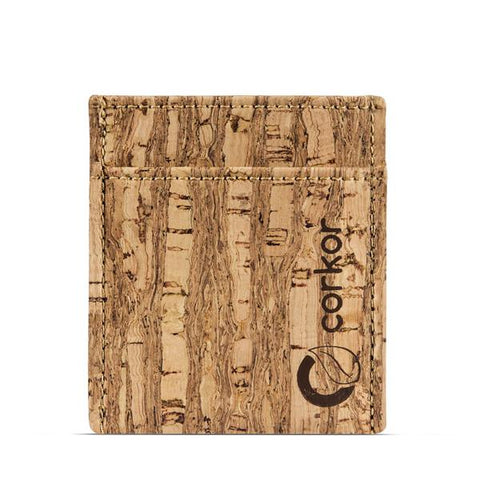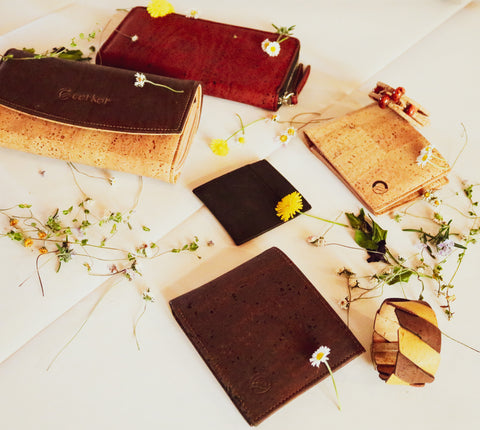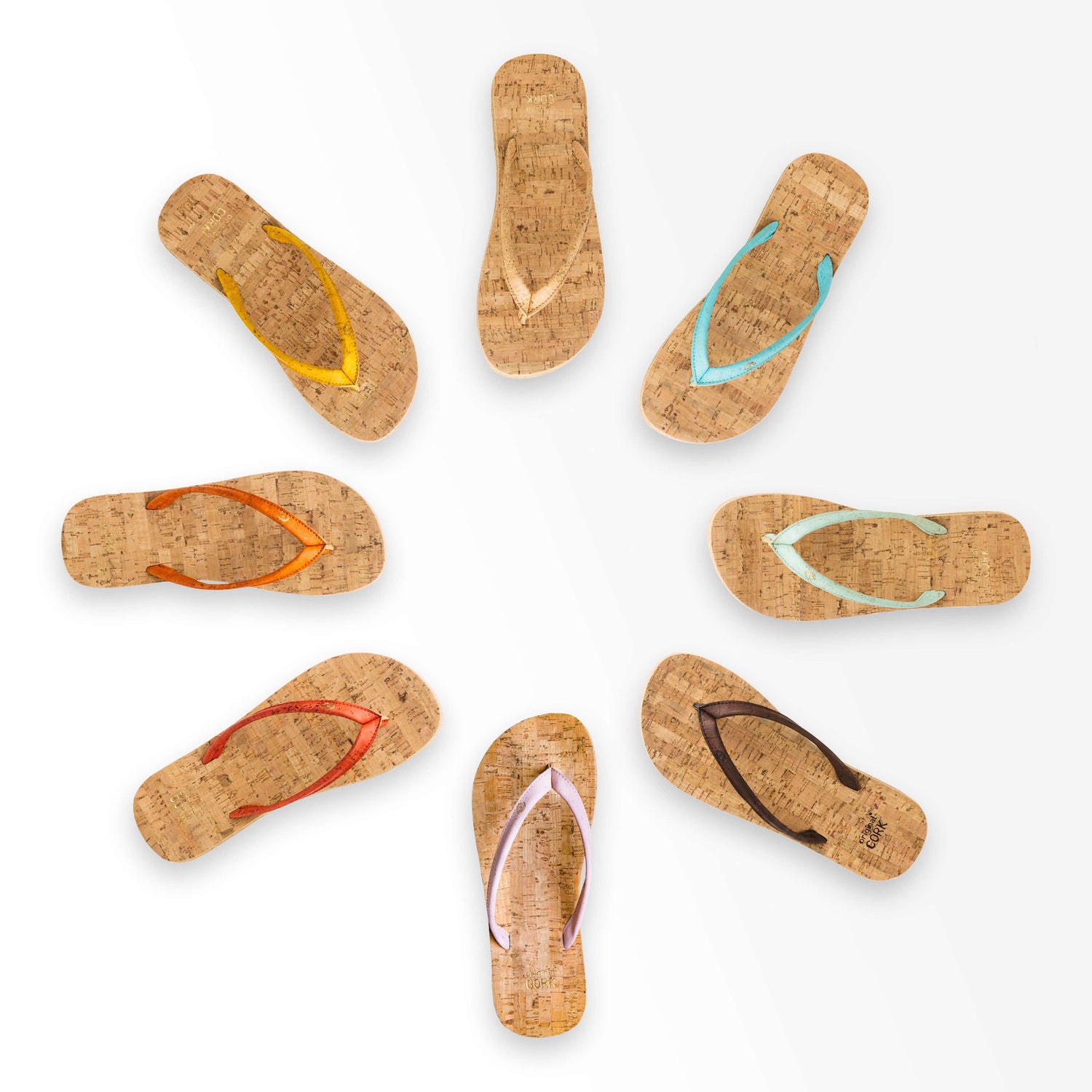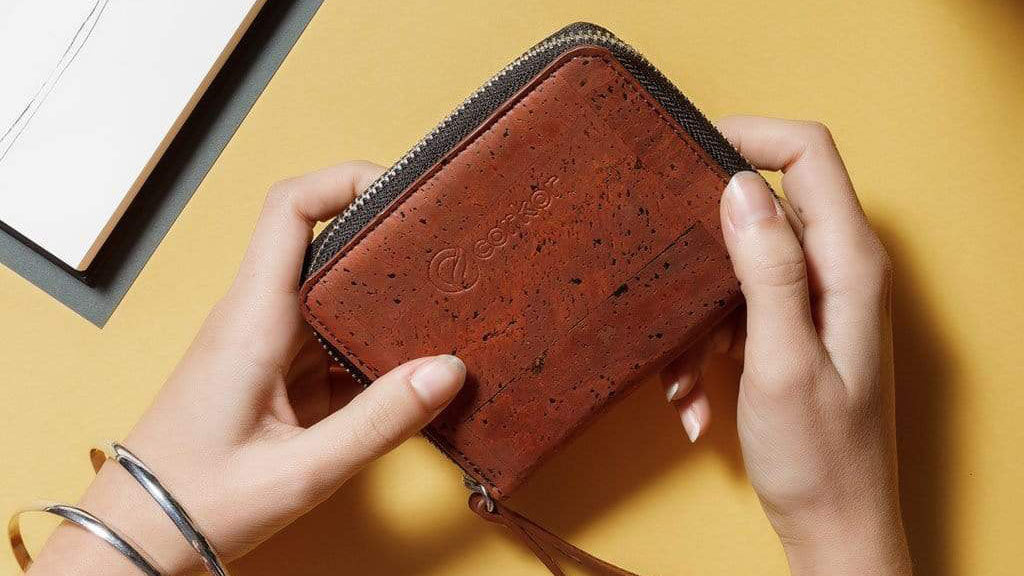For a leather substitute to be considered truly vegan, it must not only be free from animal products but also must be made from a natural, plant-based resource that does not pollute or otherwise damage the environment in its harvest, production, or disposal.
Vegan leather - recently this term has come into vogue. We are happy to see that the conversation has begun around alternatives to animal leather, but we have noticed that there is a good amount of confusion and ambiguity behind this term. What exactly is vegan leather anyway? Are all types of vegan leather the same, and more importantly, is vegan leather eco-friendly?
Quite often as of late, we hear brands talking about the term "vegan leather," when they are referring to synthetic leather. Many articles talk about "vegan leather" as though it is just one type of material, and all different types of vegan leathers can all be lumped into one category.
I don’t think it is at all fair to indiscriminately deem all types of vegan leathers as equal because as I will explain in this article, they most certainly are not. There is, unfortunately, a lot of green-washing used the marketing of synthetic vegan leathers, promoting them as a more environmentally-friendly product than they truly are.
Due to the questionable methods and materials used to make synthetic leather, we believe that when looking for vegan leather that is kind to the environment and truly adherent to vegan ethics, natural textiles are the only way to go. Of these natural materials used to make vegan leather, cork is one of the most durable and most beneficial to the environment. Let's dive deeper in to find out why.
Why Choose a Vegan Leather Over Animal Leather?

If you are reading this article, you probably already know that leather is an extremely toxic and destructive industry, due especially to its use of raw animal hide as raw material, chemical tanning procedures utilizing chromium, and the resultant run-off and water pollution caused by these factories that produce leather. With the millions of people who continue to use leather daily, there is still a booming worldwide animal-hide leather industry, which is only growing.
So, kudos to anyone looking into switching to vegan leather and putting an end to personally supporting the cruelty of the animal leather industry.
But, once you've decided to look into vegan leathers, things can get even more confusing from there. So let's discuss some different types of materials that can be called "vegan leather," and what you need to know when seeking out vegan leather products.
Vegan Leather: Environmentally Friendly or Green-Washing?

Synthetic leather has been around for many years, and used to be referred to as "faux leather" or "pleather." Recently, with the rising popularity of veganism making its way into the public eye, this material has undergone a new "branding" as so-called "vegan leather." But this is highly misleading terminology that is simply a corporate make-over meant to put a fresh face on "faux," which has gained a rather negative connotation, to entice a whole new, fresh generation of vegan shoppers. This is done with the hope that by using the buzzword "vegan" in synthetic leather marketing, that those looking for vegan products will stop there and ask no further questions.
In reality, synthetic so-called "vegan" leather does not respect vegan ethics. One of the primary tenets of veganism is to not wear, eat, or cause harm to animals, but sustainability is also a major tenet of vegan ethics, although sometimes falling second to abstaining from using animal-derived products.
In an interview with the Sydney Morning Herald, Bonnie Murthy, co-director of one of the most well-known ethical retailers in Australia, echoes this sentiment. She states, "The majority of the vegan market is still caught up in seasonal fashion which almost by definition is unsustainable, for example, built-in obsolescence, seduction of new more 'fashionable' looks, short product life, etc." She continues, "While sustainability is central to the true vegan philosophy, in practice it often runs a poor second to the animal-free element". (4)
Synthetic "vegan leather," although often touted as being a cruelty-free option, is not an environmentally-friendly product in any way. Although it does not directly utilize any animal product, it causes environmental destruction, heavy pollution, and harm to humans and animals alike. In an article entitled "Vegan Leather Isn't As Ethical As You Think," the authors explain that synthetic leather is usually made from two materials - PVC and polyurethane.
Both PVC and polyurethane are petrochemical products, meaning they are made from chemical derivatives of petroleum, that is, crude oil. Petroleum extraction requires drilling for oil using oil rigs, which are increasingly dangerous and risky, and run the risk of spilling crude oil into our ocean. PVC and polyurethane are, in essence, two types of plastic. Polyvinyl chloride (PVC) was often used in the past to make hard plastic pipes, and polyurethane (PU) is known for its use in cushions and mattress foam. Both are highly toxic materials, which we will look more into in just a second.
We believe that the vegan mindset means doing our best to do the least harm possible to our planet and all living beings. This includes avoiding animal agriculture and the use of petroleum and its derived materials, which both cause heavy levels of pollution and health problems, not to mention are primary causes of climate change. Using petroleum-based synthetic leathers to replace animal leather may not be doing the environment any favors, considering the toll on the environment caused by petroleum refinement and transformation into PVC and PU.
Therefore, we feel it is nothing more than green-washing to advertise PVC and PU leather products as "vegan," because there is nothing environmentally friendly about petroleum products.
Synthetic Vegan Leather Materials: What Exactly Are PVC and PU?

PVC was used extensively in past years to make synthetic leathers, but now PU is being more commonly used. This is due to chemical toxicity hazards that have led to a demand for the phase-out of PVC.
According to Greenpeace, PVC is the most hazardous plastic that exists. This is not new information, as their article, PVC: The Poison Plastic, which is still used commonly as a reference in other current articles, actually dates back to 2003. This comprehensive article outlines the dangers of PVC plastic and why it is so important to immediately replace PVC in consumer products.
PVC is made from a long chain consisting of Vinyl Chloride Monomer, hence its name of polyvinyl chloride (poly meaning "more than one"). The chlorine molecule in the vinyl chloride monomer is part of what renders PVC so hazardous (pure PVC plastic is 57% chlorine) and the production of PVC accounts for 40% of the chlorine used in the United States. In the creation of PVC material, a process using chlorine-based chemicals, the highly toxic chemical known as dioxin (and other similar compounds) are produced. Dioxin is considered one of the most toxic substances ever created by man. Greenpeace states that the evidence suggests, throughout its entire lifecycle, PVC is responsible for a greater share of the US annual dioxin burden than any other industrial product. (3)
So, we have chlorine and dioxin, but it doesn't stop there! Phthalates are also used in the production of PVC, and these chemicals certainly hold a place on the list of the top 3 extreme toxins found in PVC.
Phthalates are a group of chemicals used to treat PVC and other plastics to render them more flexible. PVC is a type of hard plastic, so it must be treated with these "plasticizing" chemicals to make it pliable and suitable for use in bags, jackets, and other fashion applications. (1)
Phthalates are coming under heavy scrutiny as cancer-causing chemicals, and have been found to leach from clothing and bags, especially when exposed to sunlight. According to Greenpeace, these additives are not chemically bound to the PVC, and therefore any PVC product can be "immediately dangerous to the consumer." (3) This means that yes, wearing jackets and pants made from PVC faux leather, or touching a bag in continuation that is made from PVC, is a health risk, as the chemicals used to make PVC can easily pass from the material itself onto the skin and be absorbed into the body. As strange as the concept may seem to some, the clothes we wear and the accessories we carry can have a direct effect on our health.
PU, the newer replacement for PVC in synthetic leather manufacturing, is likely almost as bad for the environment and human health as the PVC that it is aiming to substitute. PU synthetic leather is made by "painting" polyurethane in liquid form onto a fabric backing. This transformation of PU from a solid into a liquid requires highly toxic chemical solvents, which are incredibly damaging to the environment and can leach out of the finished material. (1)
Besides the risks inherent in using PVC and PU products, these petrochemical substances, considered types of plastics, do not break down naturally in the environment. They are made from petroleum, a non-renewable resource, and they take hundreds of years to biodegrade, like any plastic. This means these materials will eventually build up in landfills and our ocean. They are also some of the most difficult plastics to recycle, due to their chemical toxicity.
Vegan Leathers Are Not All The Same

In an article featured in Eluxe Magazine by Jody McCutcheon, she starts the article off with the subtitle: "Why I'd Just Say No To Vegan Leather."
She begins by telling the story of what made her ask more questions about what vegan leather is in terms of specific materials used. Her sister was excited about having found "vegan leather" made by designer brands like Stella McCartney. But upon more research, McCutcheon was appalled to discover that the majority of what is touted as "vegan leather" is just the same "faux leather" that has been around forever, and is made from PVC and polyurethane. She states, "generally speaking, 'vegan leather' reeks, literally and figuratively, of petroleum." When it comes to synthetic PVC and PU leather being referred to as "vegan leather," I couldn't agree more! However, it makes no sense to put natural vegan leathers like cork in this same category.
In this article, as well as in many other articles on the subject of "vegan leather," the mention of cork is just briefly found in one single sentence, stating that while a few types of vegan leathers are made from natural materials such as cork or kelp, the majority of faux leather is petrochemical-derived. Then these articles continue to focus heavily, if not entirely, on synthetic faux leather made from PU and PVC for the remainder of the writing. These articles conclude similarly by basically saying "vegan leather is the same as faux leather which is bad for the environment." If regarding only PU and PVC synthetic leathers, this would be a true statement. However, the brief mention of cork in one short phrase in these articles about "vegan leather" falls flat, and only the most discerning readers would even think to look more into it. These blanket statements about "vegan leathers" - when "synthetic leather" is intended - do no justice to natural vegan leathers and simply discredit them by putting them in the same group as synthetic leathers.
Now, I appreciate greatly that these articles take the time to denounce synthetic, or faux, "vegan leather" as the toxic, petroleum-made fabrics that they are. But, one could read these articles and easily walk away thinking that this conclusion to stay away from synthetics refers to ALL "vegan leather," including cork, thinking that all types of vegan leathers are equal. But, this is simply not the case. Cork, and other types of natural, plant-based vegan leathers, should not be put in the same category with PU and PVC faux leather. Cork is a 100% natural, renewable, and incredibly sustainable textile, and it is certainly not fair to lump it in with the overshadowing synthetic "vegan leather" impostors. The "faux leather" industry has hijacked the terminology of the eco-fashion movement, which is a classic green-washing technique. They are taking away from the credibility of the move toward natural and sustainable vegan textiles used to substitute leather in fashion, by muddying the waters about what "vegan leather" is and isn't.
Again, the use of petroleum, although not an animal-derived substance, is one of the single most important causal factors behind climate change. Exposure to petroleum and petrochemicals causes cancer and an increase in all types of diseases. Its continued use is leading to unprecedented global destruction, including that of wildlife habitats. Using petroleum products is in no way in accordance with vegan ethics, and therefore calling PVC or PU "vegan" is pure green-washing. It is simply a strategy to capitalize on the growing popularity of the term "vegan" and take advantage of those who haven't done their chemistry homework.
Cork: The Most Natural, Durable Vegan Leather On The Market

In our store, you can find bags, wallets, jewelry, and other accessories made from cork, which is an entirely natural fiber made from the bark of the Cork Oak, which grows exclusively in the Mediterranean. Cork bark is renewable, biodegradable, and recyclable, and the harvesting of this bark does not cause any harm to the tree. The cork bark layer is simply removed from the tree with a sharp ax by skilled professionals. This removal of the bark is beneficial to the tree and starts a "regeneration" process in which the tree begins to take in more carbon dioxide and produce more oxygen than before its harvest. The stripping of the bark also extends the lifespan of each tree. Cork harvesting is considered the world's most sustainable forestry practice, and cork forests in Portugal, Spain, and Italy are certified by the Forest Stewardship Council (FSC). What's more, harvesting cork prevents the cork forests in the Mediterranean from becoming desert, and this protects the habitats of hundreds of animals that would be otherwise extinct without the cork forests to call home.
Cork leather is produced by boiling the raw cork bark in water, pressing and rolling the boiled bark into sheets, and thinly slicing layers of cork off of the rolled sheets. Quality cork leather is an incredibly durable material, which develops character over time, much like animal leather. Cork "breaks in" and becomes even more flexible with age, but does not lose its initial shape in the process. A cork bag can last for 10-20 years, if not longer, as long as it is properly taken care of. A synthetic leather bag, on the other hand, usually starts to fall apart within about a year of use.
Although we love the natural, raw look of cork, we have heard some people say that they don't want their accessories to seem too "obviously made of cork." The good news is that there is now quite a variety of cork bags, wallets, and accessories available that can be considered both elegant and casual, featuring a range of styles to provide something for all tastes, including but not limited to those of us who go for a more natural look. Cork leather is colored with natural, plant-based dyes, and these water-based colors still allow for the vibrant patterns found in cork material to shine through. There are many black and brown cork bags, wallets, and accessories that do not seem made of tree bark, although we think that the unique look of cork is a positive trait, not a negative one. Each cork product is one of a kind, as no two pieces of cork are alike.
Other than cork, there are a lot of up-and-coming natural vegan leather textiles that are being developed, such as mushroom leather and banana leather. But, there is only one other vegan leather contender that we think is almost on the level of cork that is currently available on the market. This is Piñatex, a fabric made from the skin of pineapples, created to give new life to discarded pineapple skins. Piñatex is a beautiful fabric that utilizes what would otherwise be considered waste and is made from an entirely natural material, so we are fans of its growing use in ethical fashion. The only current issue with Piñatex is the fact that the material is currently coated with a petroleum-based resin, rendering the product non-biodegradable. But, Piñatex states on their website that they are working on substituting this resin with "a bio-based coating" to help bring their product to the front of the sustainability movement.
Sustainable Plant-Based Vegan Leather: The Best Choice

In conclusion, for a leather substitute to be considered truly vegan, it must not only be free from animal products, but it also must be made from a natural, sustainable resource that does not pollute the environment in its production or disposal. Natural vegan leather such as cork does not pose health risks due to the transfer of toxins onto our skin as does synthetic leather or chromium-tanned animal leather. It is a plant-based product that has a net-beneficial effect on the environment and follows a circular design model. No petroleum-derived material can be considered vegan, due to the environmental damage and health hazards caused by the use of petroleum.
We believe cork is the most durable and beautiful vegan, sustainable, plant-based, all-natural leather substitute available today. But, we are very supportive of all-natural vegan leathers, and we love to see innovation sprouting out from the range of different vegetable fibers that are being researched and produced. We think that any product that is made from a natural resource, does not pollute at any point in its life cycle, and has a beneficial effect on the planet should be praised.
With so many natural, truly vegan leather options making their way onto the market, with cork as the forerunner, it is easier than ever to turn down both animal leather and the toxic, petroleum-based synthetic leathers masquerading as "vegan."
Join the conversation! Let us know what you think by leaving a comment below.
-----------


